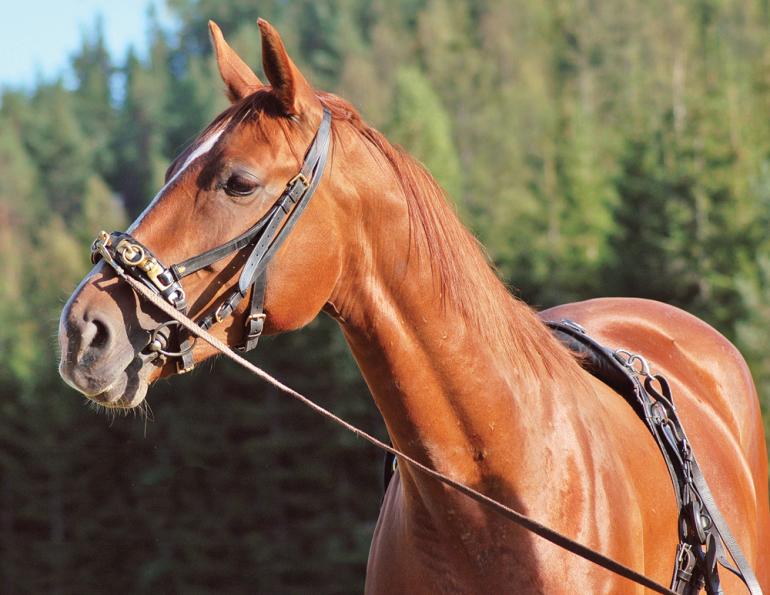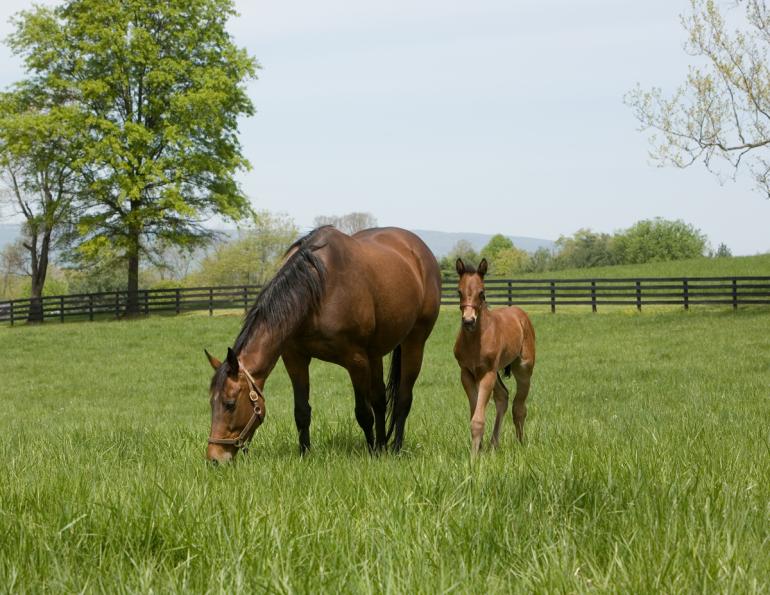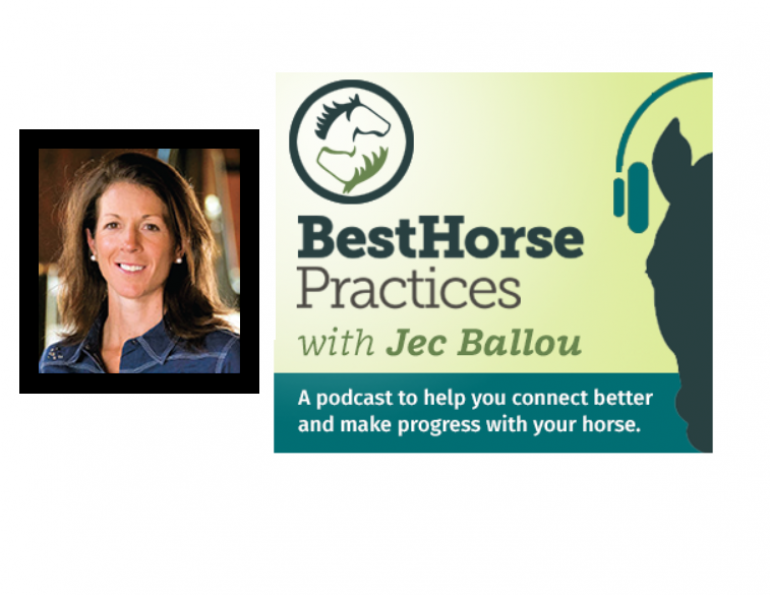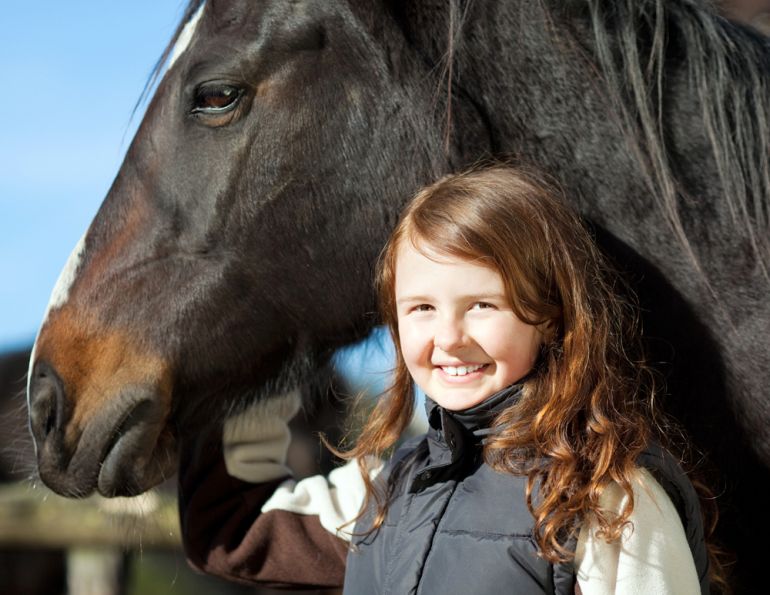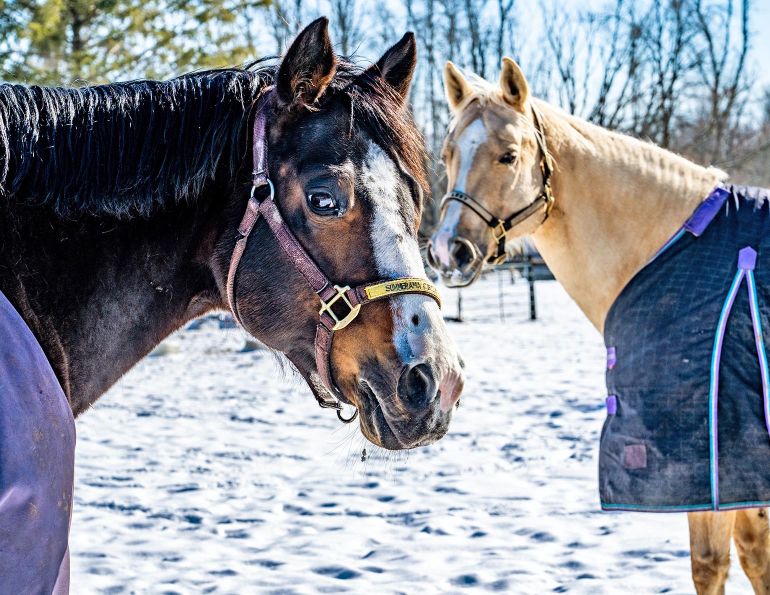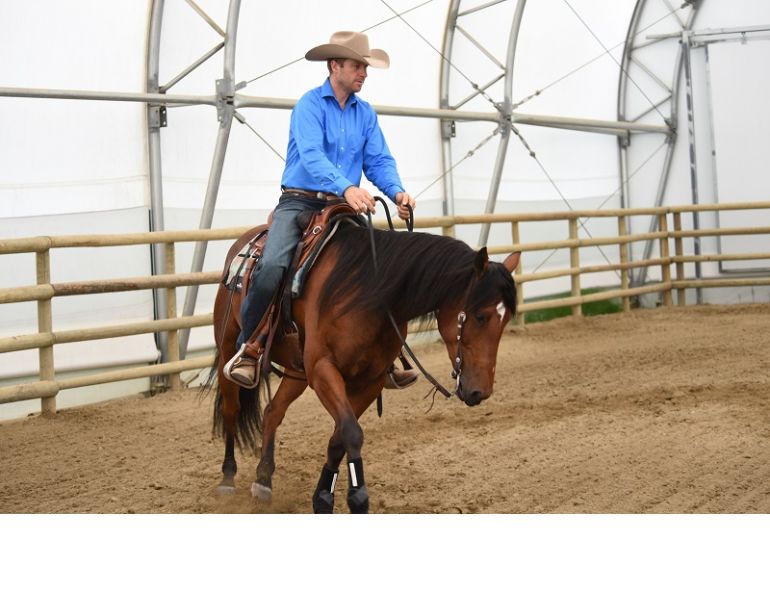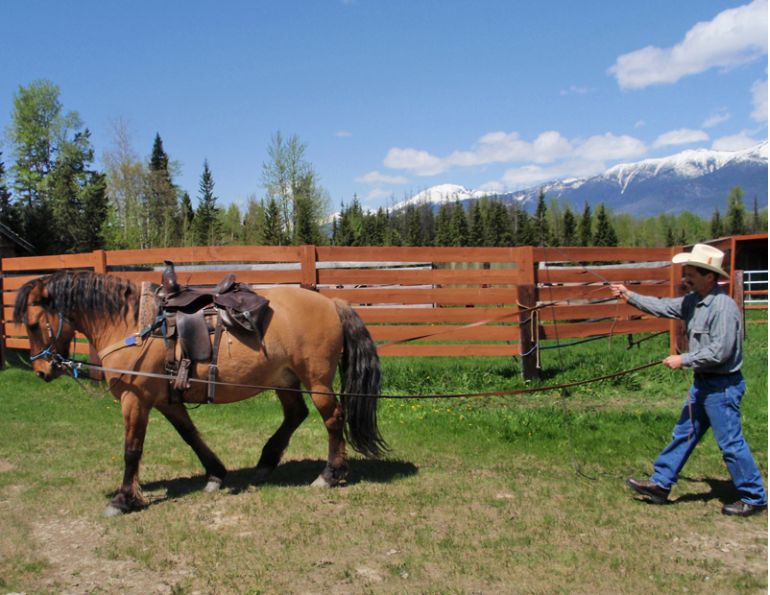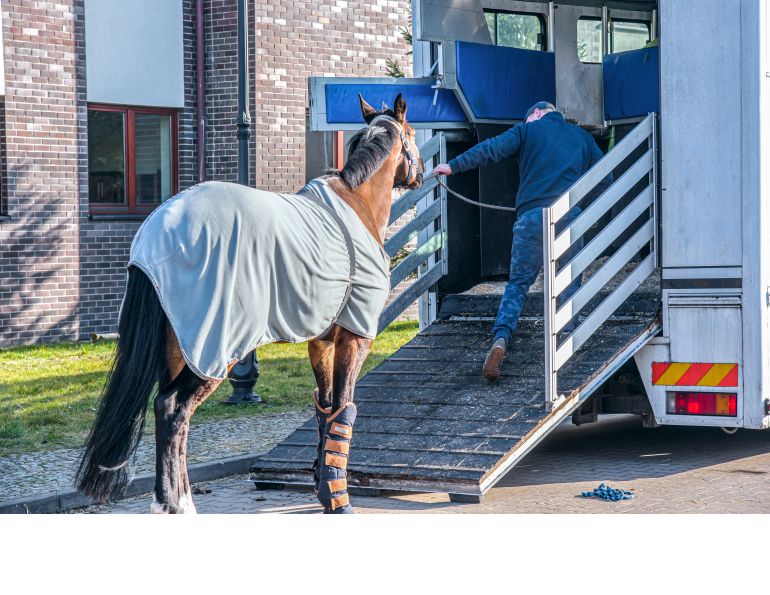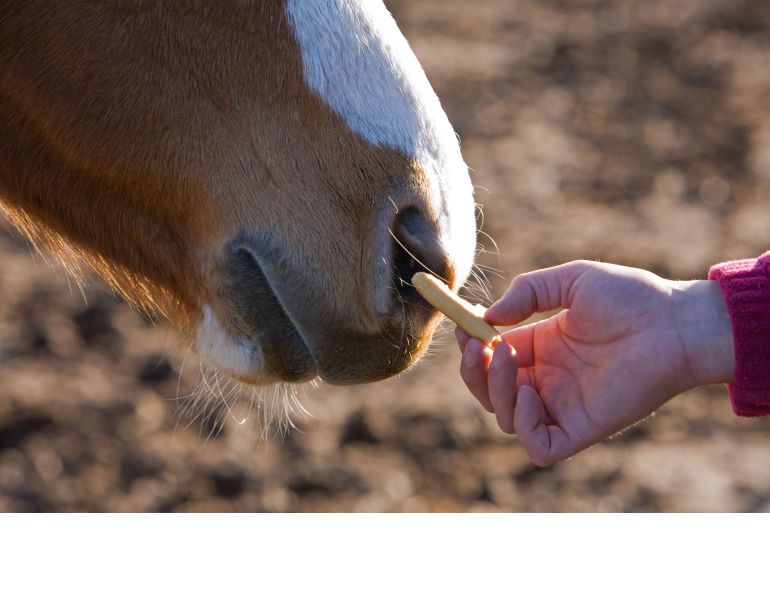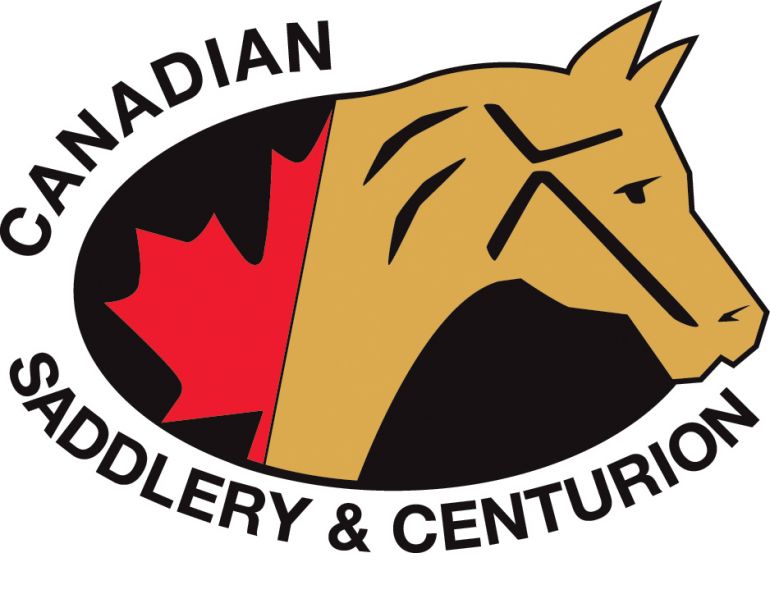Using Footwork to Change Your Horse’s Neuromuscular Patterns
By Jec A. Ballou
Groundwork can serve a range of purposes, from behaviour modification to physical conditioning, but over the long term its greatest contribution is its alteration of neuromuscular patterns. When a horse needs to adopt a new pattern of muscular activation, coordination, or balance, groundwork is often the quickest way to accomplish it. Using focused and brief groundwork sessions daily, many horses’ postural challenges can be rewired with far less tension and confusion than under saddle.
The primary benefit of these groundwork sessions is the direct triggering of core muscles through slow-moving, finely-controlled footwork. It allows full access to the horse’s nervous system without interfering stimulus from a rider or the larger locomotion muscles. Ideally, to change poor postural habits or to further embed good ones for lasting health, the core muscles need to be stimulated at the beginning of any session. Once activated, they tend to stay switched on.
If a rider’s weekly routine does not include a few minutes of schooling her horse from the ground, I always encourage it to change. On the other hand, if a rider’s routine includes repetitive daily groundwork exercises in excess of ten minutes, I encourage this to change, too. Veterinary and research studies show that short bouts of focused stimulus produce changes in the neuromuscular system more successfully than long sessions with repetitive and dulled movements.
By these recommendations, an effective routine would include groundwork exercises for five to ten minutes on two or three days per week. Further, each day should utilize at least a few novel exercises in order to ensure the horse is not just performing by rote. To ensure new or improved muscular activation, it is necessary that the horse is not executing the exercises with dullness, boredom, or listlessness. I often suggest that riders keep six to ten exercises in their toolboxes. This way, they can alternate between two or three different ones on any given day throughout a week. Remember that your goal is to practice frequently enough to gain all the rewards from each routine, but not so much that it becomes robotic and the horse is not participating fully.
So, which are the best exercises? For the purposes of this article, I offer below three simple exercises that benefit all horses regardless of discipline. They are especially useful because of their improvement on the horse’s body symmetry, posture, and core muscles. Obviously, there are many others that you might choose in addition to these. The following ones are helpful as a foundation as well as useful to revisit at least weekly. Further, it is possible to perform them nearly anywhere — a trailhead, field, arena, or wherever you have a section of mostly flat ground.
Dynamic Mobilization on an Unstable Mat
In human athletic training, greater demands on the motor control system have been measured when athletes performed exercises on unstable surfaces such as inflatable pads. In the following technique, we extend that goal to horses. Rubber pads, mattresses, or other squishy materials can be used to challenge motor control and core stability. At my barn, we use a foam mat intended for children’s gymnastics and tumbling – see Figure 1.
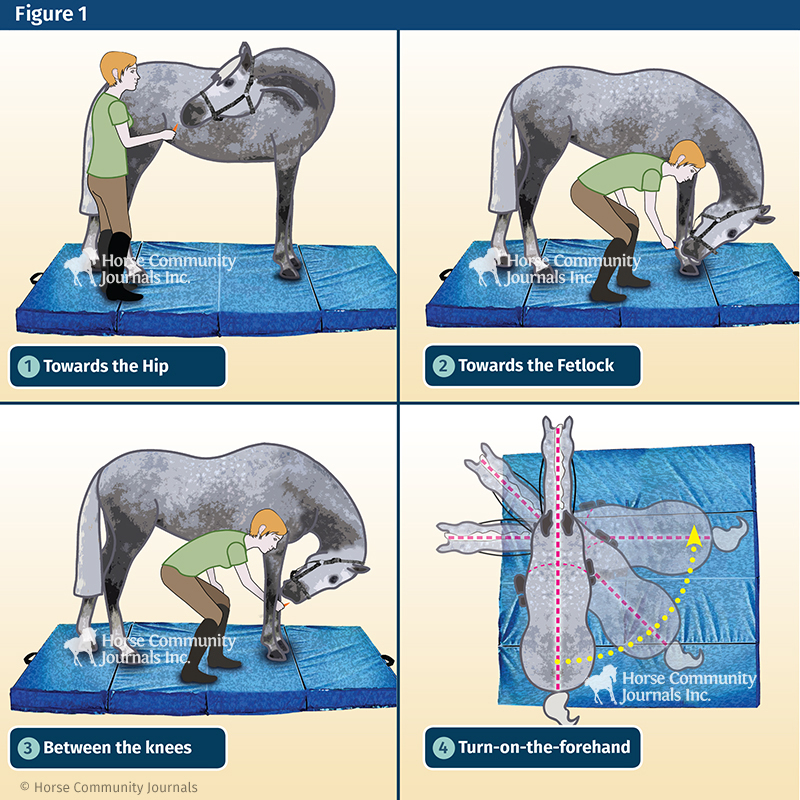
1. With your horse standing squarely on the mat, ask him to flex his head around toward his hip for a treat, or by guiding him with your hands.
2. Now ask him to reach around towards the outside of his front foot.
3. If he does okay with the two moves above, now ask him to reach for the treat between his knees.
4. Once these maneuvers are going well on each side of the horse, you can get creative with other requests. If your mat size accommodates it, consider asking for a turn-on-the-forehand while keeping all feet on the mat, or walk forwards and backwards a couple of steps. Or simply ask the horse to raise and lower his neck several times.
The Labyrinth
Used frequently to help horses become calm and focused, this arrangement of poles improves proprioception. Ideally, poles used to set up this pattern should be 12 or 16 feet long, but shorter ones can suffice if there is no other option.
When using shorter poles, you may need to allow some gaps of space between poles at the corners rather than touching them end-to-end. The horse should be able to make a comfortable turn at each corner without excessive confinement.
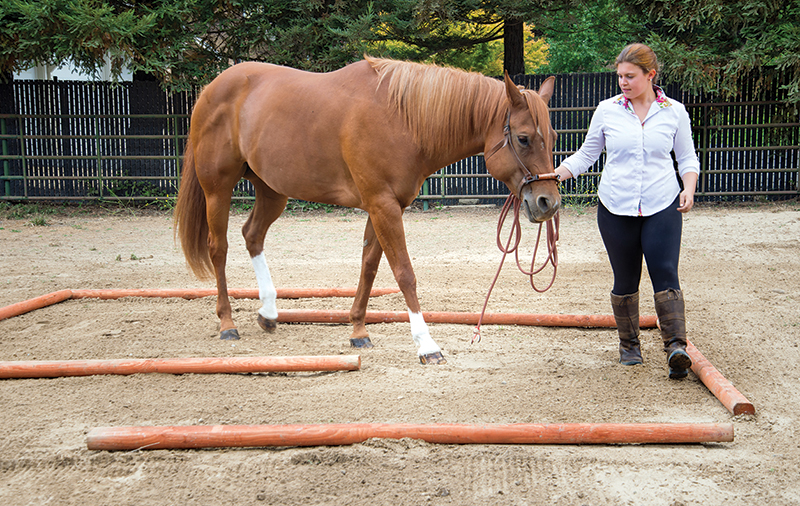
Photo courtesy of Jec A. Ballou.
I have found this exercise to be especially useful for correcting the imbalance of horses that tend to travel with heavy weight on the forehand, or ones that stiffen their neck rigidly when in motion.
1. Set up the labyrinth as shown in the photo.
2. Walk your horse very slowly through the labyrinth.
3. Take your time and proceed with small, careful steps. Be sure to flex the horse’s poll/neck in the direction of each new turn.
4. Aim for an uninterrupted rhythm of shortened and precise steps without the horse stopping.
5. Do not be overly concerned if the horse bangs the poles. This is part of the experience.
Longeing Therapy
Combining gait transitions, bending lines, and cavalletti, this routine makes the most of any longeing session by enhancing the horse’s coordination and balance. He has to adjust and organize himself when crossing the poles and shifting between each circle. For this pattern it is better to err on the side of keeping his gaits slow and mellow rather than creating a lot of impulsion.
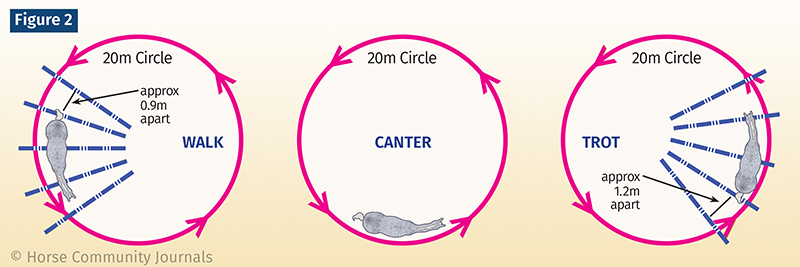
1. Begin by setting up five poles on one end of your arena in a fan and spaced at a distance for walking (slightly less than one metre apart). At the other end of your arena about 60 metres away, arrange five poles spaced at a distance for trotting (approximately 1.2 metres apart) - see Figure 2.
2. Now ask your horse to circle around you on a 20-metre circle, crossing the walking poles first.
3. Make three circles like this.
4. Walk to the middle of your arena away from the poles and ask your horse to canter three circles around you.
5. Transition to a trot and move your circle to the trotting poles on the far end of the arena, making three circles over these poles.
6. Pick up the canter again and move back to the center of the arena for three circles.
7. Return to a walk, move over to the walking poles, and make three circles over them.
8. Keep repeating this sequence for up to 10 minutes, depending on your horse’s fitness, working the horse in both directions.
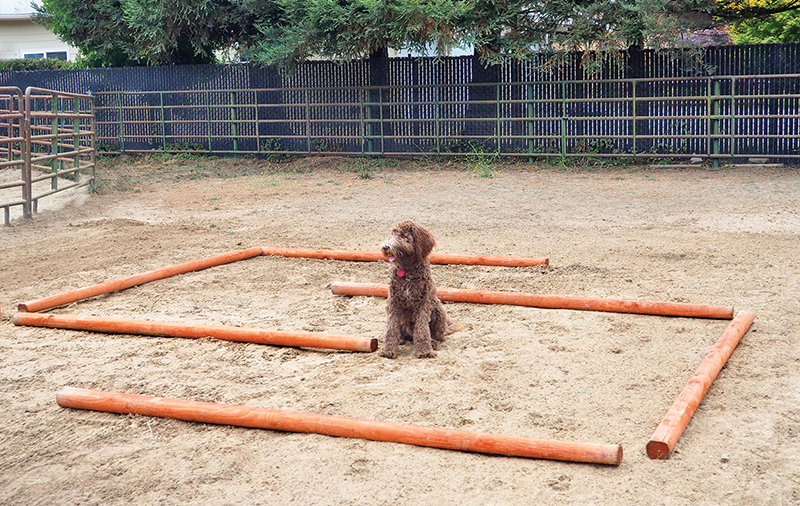
Photo courtesy of Jec A. Ballou.
Main photo: Dreamstime/Suvilli
To read more of Jec Ballou's articles on this site, click here.



